Abstract
Chloride uptake in intact cells of Halobacterium halobium was characterized by rates of influx and efflux of 36Cl- under conditions of light, respiration, or both. Halobacterial mutant strains with and without retinal transport proteins allowed study of the effects of halorhodopsin and bacteriorhodopsin under illumination. Two structurally independent chloride transport systems could be distinguished: halorhodopsin, the already known light-driven chloride pump, and a newly described secondary uptake system, which was energized by respiration or by light via bacteriorhodopsin.
Full text
PDF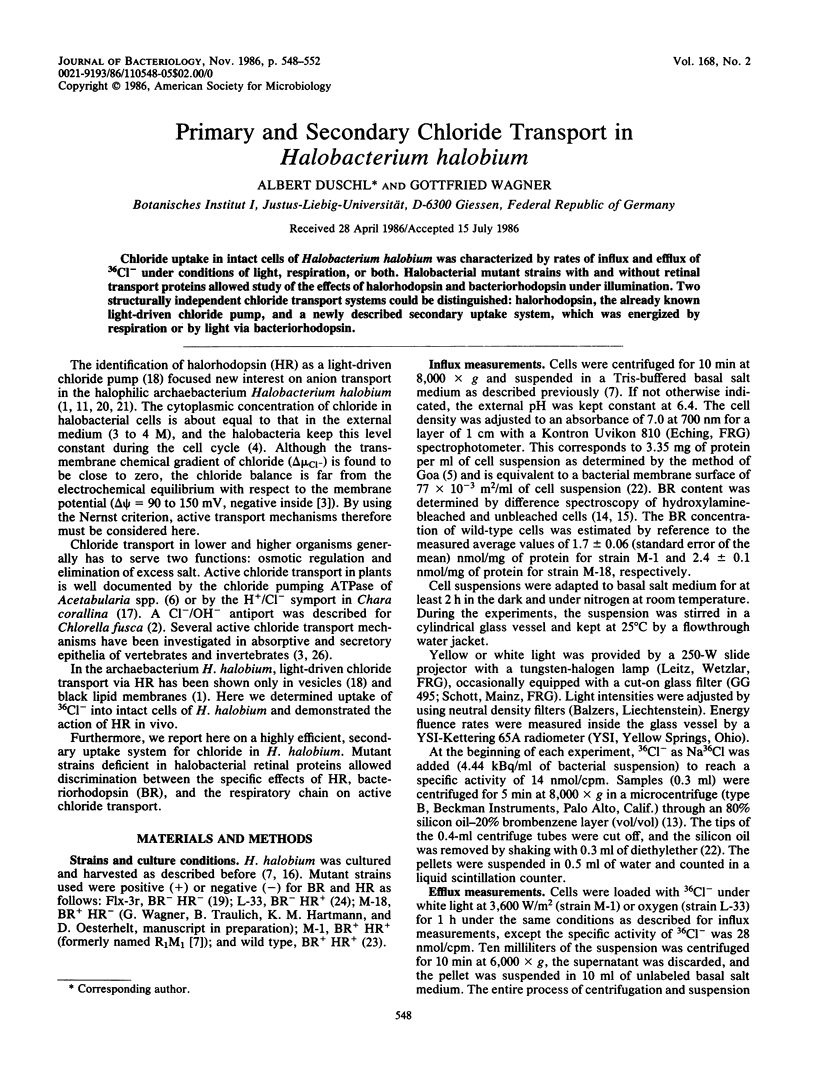
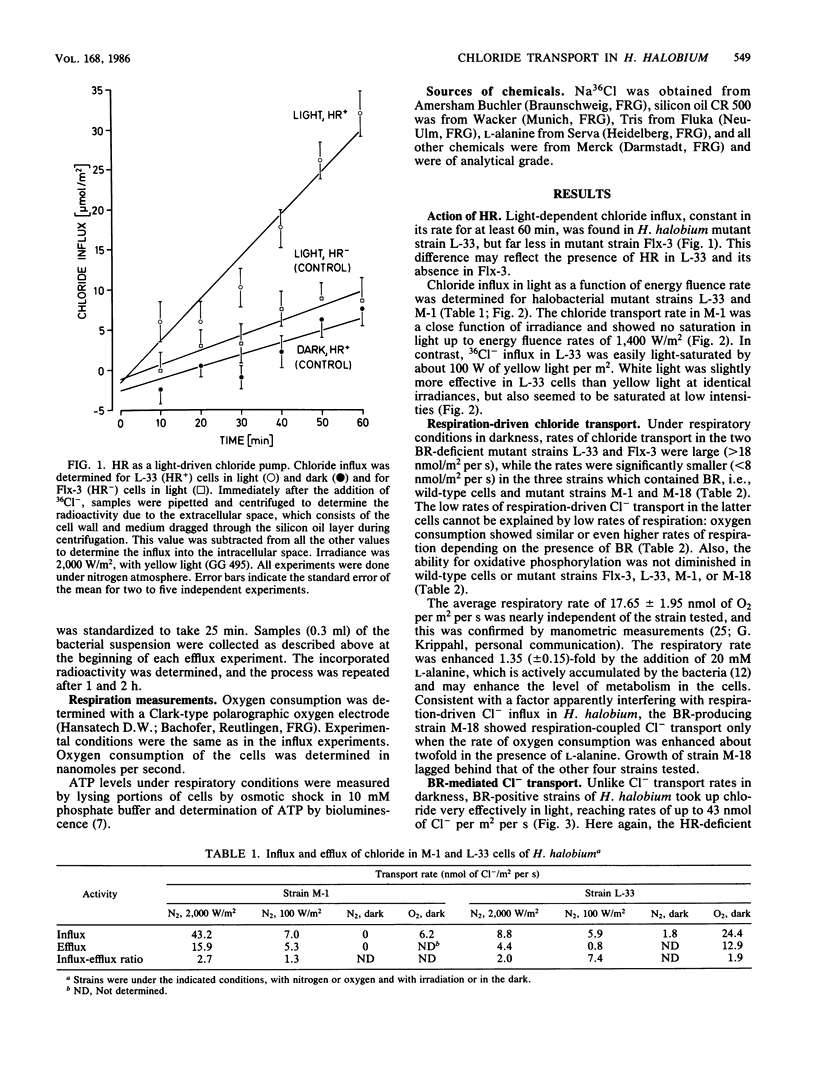
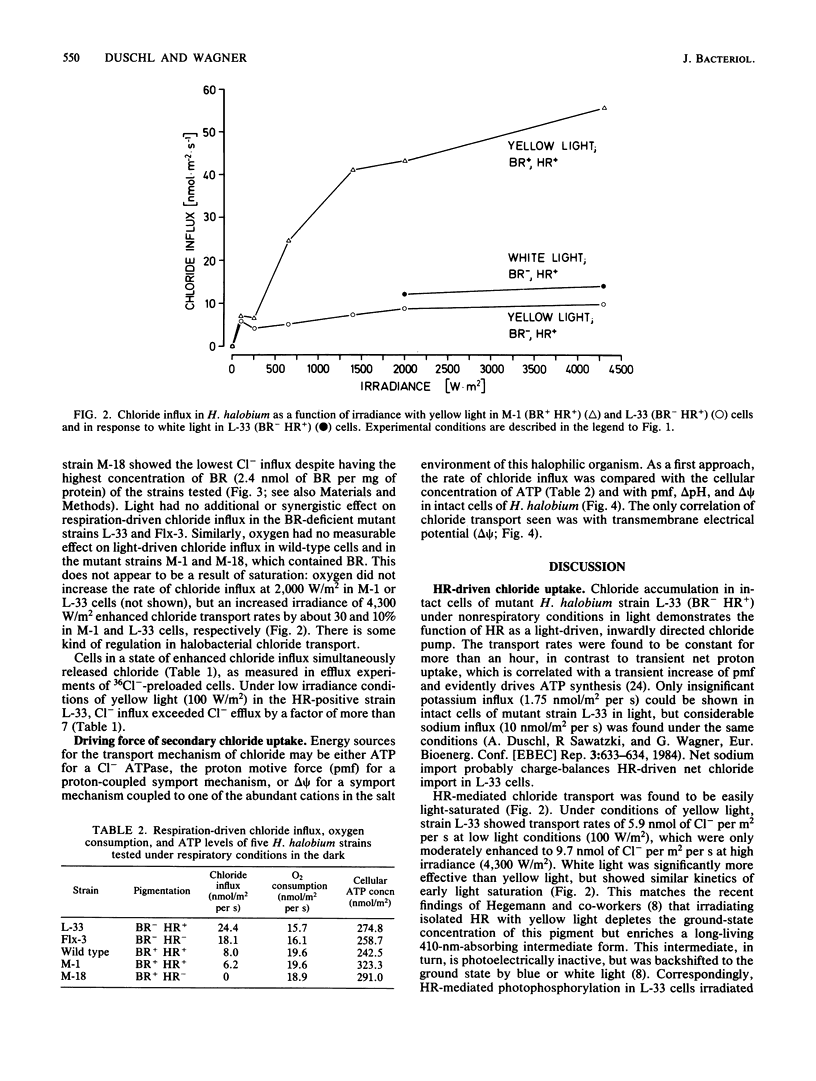
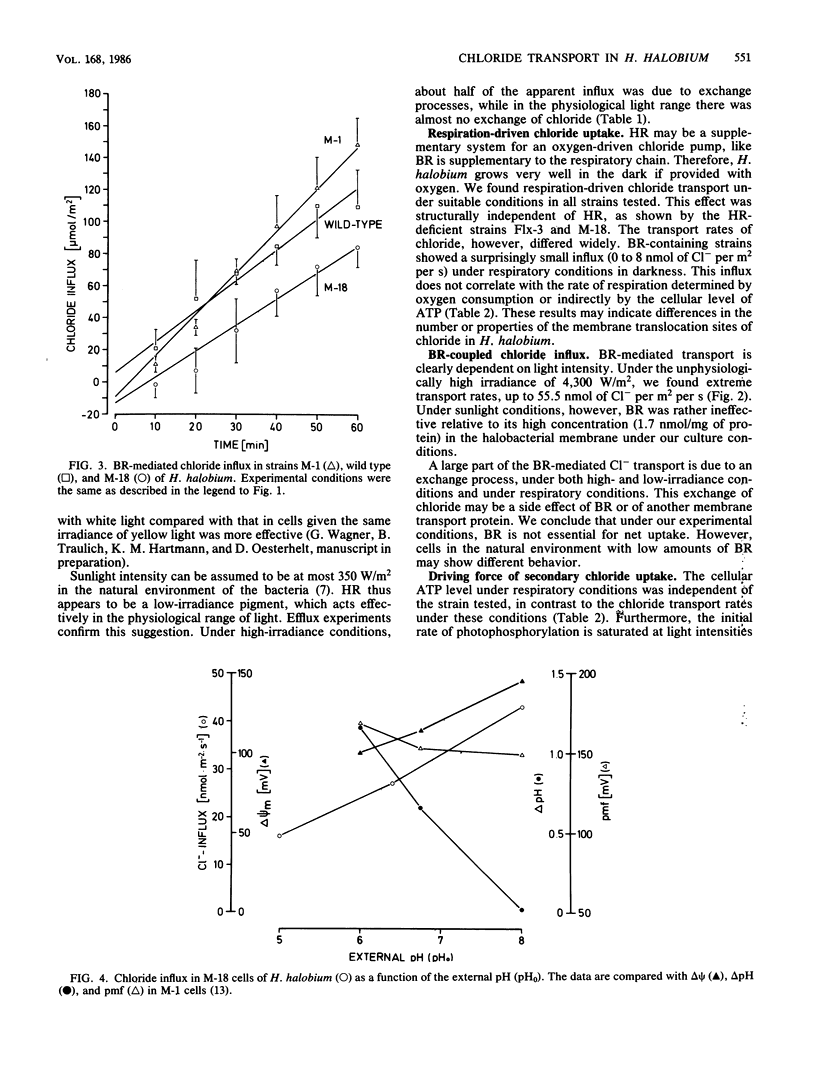
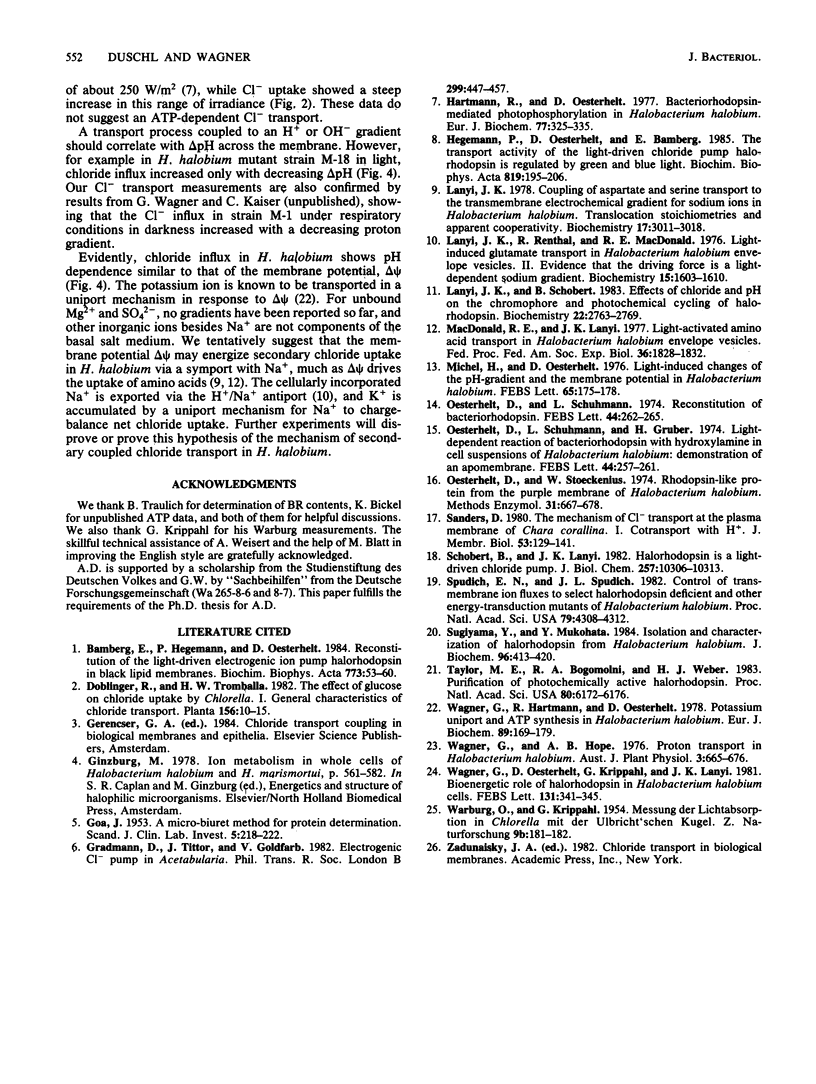
Selected References
These references are in PubMed. This may not be the complete list of references from this article.
- GOA J. A micro biuret method for protein determination; determination of total protein in cerebrospinal fluid. Scand J Clin Lab Invest. 1953;5(3):218–222. doi: 10.3109/00365515309094189. [DOI] [PubMed] [Google Scholar]
- Gradmann D., Tittor J., Goldfarb V. Electrogenic Cl- pump in Acetabularia. Philos Trans R Soc Lond B Biol Sci. 1982 Dec 1;299(1097):447–457. doi: 10.1098/rstb.1982.0143. [DOI] [PubMed] [Google Scholar]
- Hartmann R., Oesterhelt D. Bacteriorhodopsin-mediated photophosphorylation in Halobacterium halobium. Eur J Biochem. 1977 Jul 15;77(2):325–335. doi: 10.1111/j.1432-1033.1977.tb11671.x. [DOI] [PubMed] [Google Scholar]
- Lanyi J. K. Coupling of aspartate and serine transport to the transmembrane electrochemical gradient for sodium ions in Halobacterium halobium. Translocation stoichiometries and apparent cooperativity. Biochemistry. 1978 Jul 25;17(15):3011–3018. doi: 10.1021/bi00608a012. [DOI] [PubMed] [Google Scholar]
- Lanyi J. K., Renthal R., MacDonald R. E. Light-induced glutamate transport in Halobacterium halobium envelope vesicles. II. Evidence that the driving force is a light-dependent sodium gradient. Biochemistry. 1976 Apr 20;15(8):1603–1610. doi: 10.1021/bi00653a002. [DOI] [PubMed] [Google Scholar]
- MacDonald R. E., Lanyi J. K. Light-activated amino acid transport in Halobacterium halobium envelope vesicles. Fed Proc. 1977 May;36(6):1828–1832. [PubMed] [Google Scholar]
- Michel H., Oesterhelt D. Light-induced changes of the pH gradient and the membrane potential in H. halobium. FEBS Lett. 1976 Jun 1;65(2):175–178. doi: 10.1016/0014-5793(76)80473-5. [DOI] [PubMed] [Google Scholar]
- Oesterhelt D., Schuhmann L., Gruber H. Light-dependent reaction of bacteriorhodopsin with hydroxylamine in cell suspensions of Halobacterium halobium: demonstration of an apo-membrane. FEBS Lett. 1974 Aug 30;44(3):257–261. doi: 10.1016/0014-5793(74)81152-x. [DOI] [PubMed] [Google Scholar]
- Oesterhelt D., Schuhmann L. Reconstitution of bacteriorhodopsin. FEBS Lett. 1974 Aug 30;44(3):262–265. doi: 10.1016/0014-5793(74)81153-1. [DOI] [PubMed] [Google Scholar]
- Oesterhelt D., Stoeckenius W. Isolation of the cell membrane of Halobacterium halobium and its fractionation into red and purple membrane. Methods Enzymol. 1974;31:667–678. doi: 10.1016/0076-6879(74)31072-5. [DOI] [PubMed] [Google Scholar]
- Schobert B., Lanyi J. K. Halorhodopsin is a light-driven chloride pump. J Biol Chem. 1982 Sep 10;257(17):10306–10313. [PubMed] [Google Scholar]
- Spudich E. N., Spudich J. L. Control of transmembrane ion fluxes to select halorhodopsin-deficient and other energy-transduction mutants of Halobacterium halobium. Proc Natl Acad Sci U S A. 1982 Jul;79(14):4308–4312. doi: 10.1073/pnas.79.14.4308. [DOI] [PMC free article] [PubMed] [Google Scholar]
- Sugiyama Y., Mukohata Y. Isolation and characterization of halorhodopsin from Halobacterium halobium. J Biochem. 1984 Aug;96(2):413–420. doi: 10.1093/oxfordjournals.jbchem.a134852. [DOI] [PubMed] [Google Scholar]
- Taylor M. E., Bogomolni R. A., Weber H. J. Purification of photochemically active halorhodopsin. Proc Natl Acad Sci U S A. 1983 Oct;80(20):6172–6176. doi: 10.1073/pnas.80.20.6172. [DOI] [PMC free article] [PubMed] [Google Scholar]
- Wagner G., Hartmann R., Oesterhelt D. Potassium uniport and ATP synthesis in Halobacterium halobium. Eur J Biochem. 1978 Aug 15;89(1):169–179. doi: 10.1111/j.1432-1033.1978.tb20909.x. [DOI] [PubMed] [Google Scholar]


